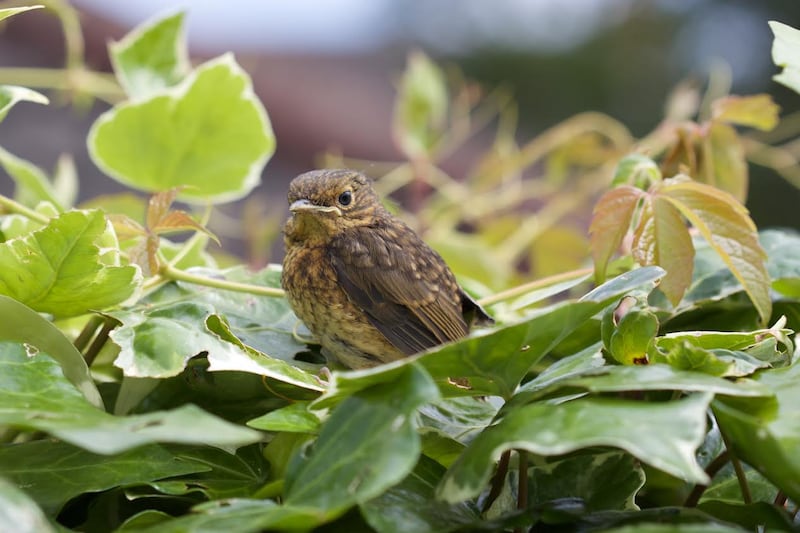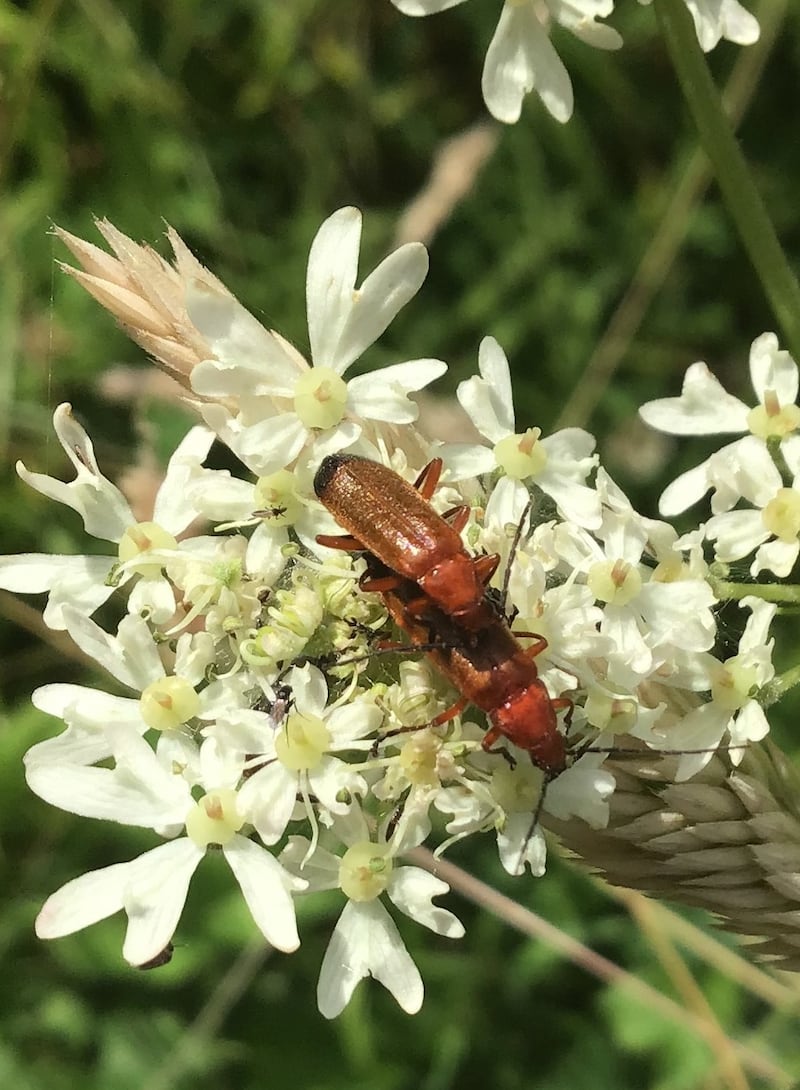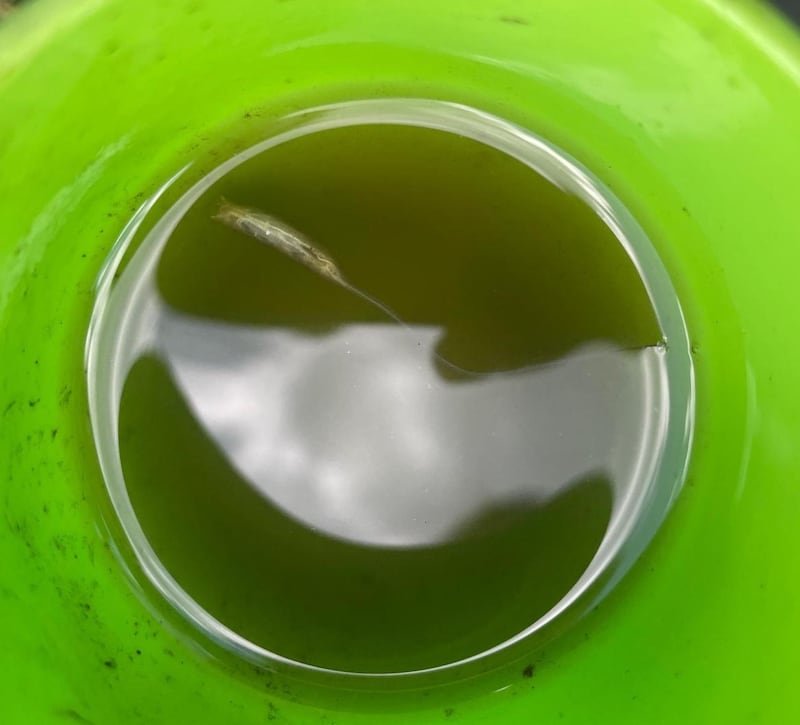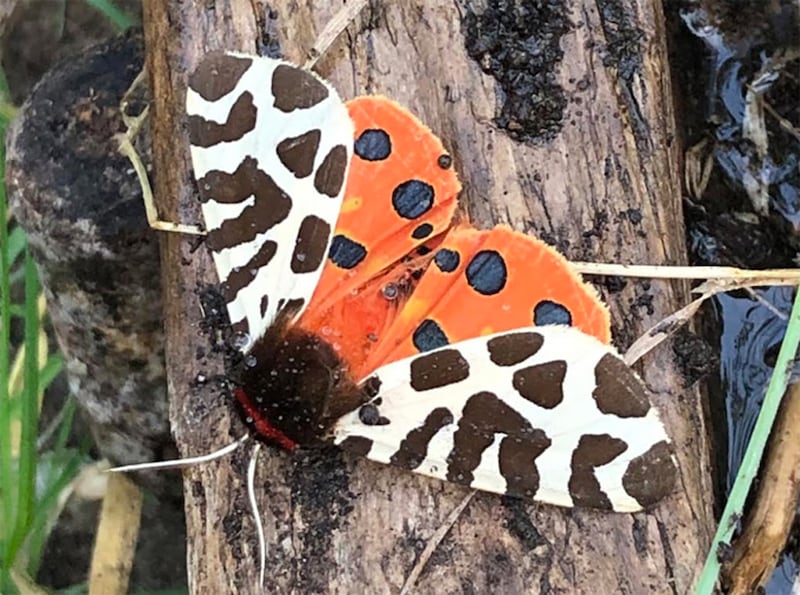This beautiful great northern gannet fetched up on the Ballynahinch river recently, disoriented and unable to fly. According to the Swan Rescue people, it was probably a victim of bird flu and nothing could be done for it. Killian O’Donnell, Co Galway
Avian flu first struck Irish gannets last year and has returned again, although the species doesn’t seem to be as badly decimated as our terns were. Interestingly, recent studies on antibodies in blood samples taken from gannets on Bass Rock in Scotland showed that some can survive infection – albeit with large black irises rather than the full blue ones of unaffected gannets. Your photo shows large black irises, so maybe the gannet did go on to survive. Never touch dead or dying birds, lest avian flu might spread to humans.

This brown speckled bird is in my garden. It is not a thrush – smaller, more robin-sized. What can it be? Myles Long, Wexford
It is actually a young robin, just fledged from a nest a short time ago. It will not get its red feathers until its first moult in two-three months’ time. This is because Daddy wouldn’t like another robin – apart from his mate – with a red breast in his territory. He would be aggressive towards it, driving it out instead of helping it learn to find food and how to fend for itself.
READ MORE

Could you identify this insect found feeding and possibly mating on Queen Anne’s lace plants in my garden? Jim Waldron, Co Roscommon
This is one of several species of soldier beetles that occur in Ireland – so called because the red colour of the wing cases put people in mind of British Redcoats. This one, Rhagonycha lutea, is around earlier than the red-headed one R fulva. These ones are productively passing the time as they wait on the umbelliferous flower head for prey such as aphids.

What is this? We found some in a wheelbarrow full of stale water. Maybe a baby slug? Why the tail? Esme, Arthur & Patrick Haworth Moore, Co Meath
It is not a baby slug but the endearingly named rat-tailed maggot. It is the young stage of the drone fly – a dark-bodied hoverfly that mimics a male honeybee. While the adults visit flowers to feed on nectar, they are attracted to smelly stagnant water to lay eggs. The larvae can live in the most polluted, oxygen-poor water as they breathe air from the surface using the tube as a snorkel.

Is the wing pattern of this tiger moth, photographed after evening rain in my parents’ woodland in Corrandulla, due to its trying to dry out? Fiona Mohr, Co Galway
It might well be trying to dry out, as normally the garden tiger moth only exposes its bright red underwings to scare off predators when it is disturbed. The red flash startles birds that surprise it when at rest with only the forewings on display. The caterpillars are large, covered with long black and chestnut hairs, and are known as woolly bears.
I took this photo on the Flaggy Shore near New Quay, Co Clare, with children’s hands for size comparison. Call you tell me about the fossils therein? Colette Cole, Dublin
These fossils are a collection of crinoid corals that were deposited into limestone mud at the bottom of the sea 330 million years ago during the Carboniferous period, as Eamon Doyle of Clare County Council confirms. The seas around Ireland then had a warm environment like that of the Great Barrier Reef today. The crinoids were animals attached to the seafloor by a stalk with feathery arms at the top.
Please submit your nature query, observation, or photo with a location, via irishtimes.com/eyeonnature














